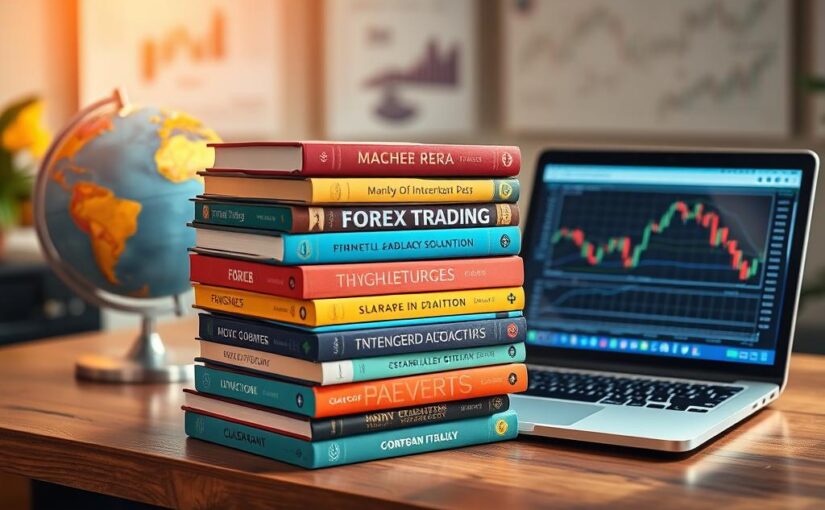Navigating the dynamic forex market can be a daunting task, but with the right resources, traders can develop the knowledge and skills needed to succeed. This guide showcases the playwin83 top forex trading books that will help you master the complexities of the currency markets. Whether you’re a beginner or an experienced trader, these essential reads offer valuable insights, strategies, and techniques to enhance your trading performance.
From foundational guides that cover the basics of forex trading to in-depth explorations of advanced market analysis and risk management, this selection of books provides a comprehensive educational experience. Immerse yourself in the wisdom and expertise shared by renowned industry professionals, and unlock the secrets to becoming a more confident and profitable forex trader.
Mastering the Basics: Essential Forex Trading Books
For those new to the exciting world of forex trading, mastering the fundamentals is crucial. Two essential books stand out as must-reads for forex trading beginners: “Currency Trading for Dummies” and “Forex Essentials in Simple Terms.” These comprehensive guides provide a solid foundation in forex trading basics, helping readers understand the terminology, mechanics, and core concepts of the currency markets.
Currency Trading for Dummies
“Currency Trading for Dummies” is a highly accessible and informative book that demystifies the complex forex trading landscape. It covers the basics of forex trading, including how currencies are traded, the role of leverage, and the importance of risk management. Beginners will find this book invaluable in developing a strong understanding of the forex trading basics, setting them up for success on their trading journey.
Forex Essentials in Simple Terms
Complementing “Currency Trading for Dummies,” “Forex Essentials in Simple Terms” offers a straightforward and easy-to-follow approach to understanding the fundamentals of forex trading. This book delves into the core concepts, such as currency pairs, pips, and market sessions, providing readers with a solid grasp of the forex trading fundamentals. By mastering these essential elements, aspiring forex traders can build a strong foundation for their future trading activities.
Mastering the forex trading basics through these two essential books is a crucial first step for any beginner. By understanding the core concepts and terminology, new traders can confidently navigate the currency markets and lay the groundwork for their successful trading strategies.
Forex Trading Books: In-Depth Guides for Advanced Traders
For seasoned forex traders seeking to deepen their understanding of the market, there is a wealth of advanced forex trading books that offer invaluable insights. These resources delve into the intricacies of trading strategies, risk management, and the psychological aspects of successful forex trading.
One essential read for advanced traders is Forex Trading Strategy Books. These books explore sophisticated trading techniques, such as trend analysis, chart patterns, and algorithmic trading. By mastering these strategies, experienced traders can refine their decision-making process and gain an edge in the dynamic forex market.
Alongside strategy guides, Forex Trading Psychology Books are invaluable resources for traders looking to develop a disciplined and emotionally-resilient approach. These books delve into the cognitive biases and emotional pitfalls that can hinder trading performance, offering proven techniques to manage stress, fear, and greed—the common enemies of successful traders.
Ultimately, the advanced forex trading books available in the market provide a comprehensive toolkit for seasoned traders seeking to elevate their skills and profitability in the currency markets. By integrating the insights from these in-depth guides, traders can unlock their full potential and navigate the forex landscape with greater confidence and success.
Navigating Market Psychology and Risk Management
Mastering the forex market requires more than just technical analysis and trading strategies. It also demands a deep understanding of the psychological factors that can influence a trader’s decision-making and the effective management of risk. Two essential books that delve into these critical aspects of forex trading are “Trading in the Zone” by Mark Douglas and “The Disciplined Trader” by Dr. Van Tharp.
Trading in the Zone
In “Trading in the Zone,” author Mark Douglas explores the mental and emotional obstacles that often prevent traders from achieving consistent success. He emphasizes the importance of developing a trading mindset that is grounded in the present moment, free from fear, anxiety, and the desire for immediate gratification. By cultivating this “zone” of focused attention and disciplined execution, traders can overcome the psychological barriers that often sabotage their forex trading psychology.
The Disciplined Trader
Dr. Van Tharp’s “The Disciplined Trader” takes a comprehensive approach to the psychology of forex trading. The book delves into the cognitive biases, emotional triggers, and psychological patterns that can lead to poor risk management and suboptimal trading decisions. By understanding these factors and implementing proven techniques for developing self-awareness and emotional control, traders can enhance their forex risk management skills and increase the likelihood of long-term profitability.
Whether you’re a novice or an experienced trader, incorporating the lessons from “Trading in the Zone” and “The Disciplined Trader” into your forex trading mindset can be a game-changer. By mastering the psychological and risk management aspects of the forex market, you’ll be well on your way to achieving sustainable success in your trading journey.
Strategies and Techniques for Profitable Trading
The final section of this article delves into forex trading books that focus on specific strategies, techniques, and systems for profitable trading. These resources provide in-depth guidance on various trading approaches, from classic technical analysis methods to advanced algorithmic trading systems. By incorporating the insights from these books, you can expand your repertoire of trading tools and optimize your forex trading performance.
One of the must-read books in this category is “The Complete Guide to Algorithmic Trading” by Michael Halls-Moore. This comprehensive guide covers the fundamentals of algorithmic trading, including the design, implementation, and optimization of trading strategies. It also explores the use of machine learning and artificial intelligence in forex trading, equipping you with the knowledge to stay ahead of the curve.
Another essential read is “The Art and Science of Technical Analysis” by Adam Grimes, which explores the timeless principles of technical analysis and their application in the forex market. This book provides a deep dive into chart patterns, trend analysis, and risk management, empowering you to make more informed trading decisions based on market data and technical indicators.


